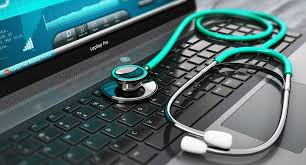Source – dataconomy.com
When we think about the future, we might imagine flying cars, superior technology and the potential to cure all diseases, extend our lifespan and improve the general health of world’s population. These hopes are more or less realistic, but this is so in lare part thanks to the advancement of big data and the health technology industry. Big data specifically provides an enormous volume of information which helps healthcare providers analyze data and develop some of the most significant progressions in the HealthTech industry. To help highlight the impact that big data has had and will continue to have, let’s take a look at 4 essential ways that big data impacts the HealthTech industry.
- It helps program machine learning technology
Big data has a significant role in programming machine learning and directly assisting in machines learning themselves to help identify disease and uncover potential treatment options.
Although early in development, machine learning technology has already made significant improvements in patient treatment. One specific example of is Enlitic Company’s lung nodule detector which can achieve positive predictive values at a rate 50% higher than a radiologist. At the moment, the company is testing clinical application for various medical conditions across CT, X-RAY and MRI scans with hopes of getting a much more thorough diagnosis in less time.
Still, successful application of machine learning cannot rely only on cramming collected amounts of Big Data into algorithms and hoping for the best result; it requires selection of large and highly targeted data sets which becomes a must-have skill for practitioners at this point.
- It improves communication and transparency
Whether it’s keeping track of patient prescriptions or maintaining accurate health records across multiple health practices, communication and transparency between patients and doctors has, at times, been fuzzy.
Fortunately, Big data can solve this issue by automating the communication and transparency between both patients, healthcare providers and researchers. Much of this improvement has been the result of implementing Electronic Health Records (EHR), which have been adopted by nine out of every 10 US physicians. With EHRs, health providers can keep track of patient visits across multiple hospitals and providers, while patients are also able to quickly access their health history, along with doctor or nurse notes and recommendations, through mobile apps.
More interesting insights on EHRs and health apps. Did you know:
- 66% of Americans use mobile apps to manage a broad range of health issues
- 61% use apps to communicate with physicians
- 46% use apps as medical reminders
- 45% rely on them to track their symptoms
- Experts predict that by 2018, 50% of mobile device users will download about 3.4 billion health apps.
- It promotes progress in the Telehealth Industry
Big data and sophisticated analytics are helping deliver personalized care through telemedicine, also known as remote patient monitoring. This enables clinicians and caregivers to target high-risk patients and offer them individualized treatment plans which are designed to prevent hospitalization and possible re-admission by predicting acute medical events. The more data we collect, the more precise predictions we can make. From there, we can implement better prevention programs.
As you may know, Telehealth system uses smartphones, Bluetooth, Fitbits, and similar sensors to gather data about everything from a person’s blood pressure, glucose levels, weight, physical activity and medication intake.
Research has shown that patients in Telehealth equipped ICU centers have 26% lower mortality rate and get released 20% earlier. By 2019, the National Business Group on Health predicts that this number will leap to 97%.
- It helps us catch fraud
The National Health Care Anti-Fraud Association estimates that healthcare fraud costs the US about $68 billion annually. Fortunately, big data analytics play a significant role in fraud detection and prevention. In fact, the Centers for Medicare and Medicaid Services caught and stopped more than $210.7 million in healthcare fraud in just one year using predictive analytics.
Upon finding such major success, United Healthcare decided to transition to predictive modeling environment on a Hadoop big data platform. This development helped them identify inaccurate claims and generate a 2200% return on their big data/advanced technology.
The ability to store information and go back into a patient’s history and analyze large unstructured datasets of previous claims is the key to identifying health care fraud. Machine learning algorithms are used to detecingt patterns and anomalies such as patients who are receiving healthcare services from different hospitals in few different locations simultaneously, hospital’s short-term overuse of services, or identical prescriptions filled in multiple locations.
